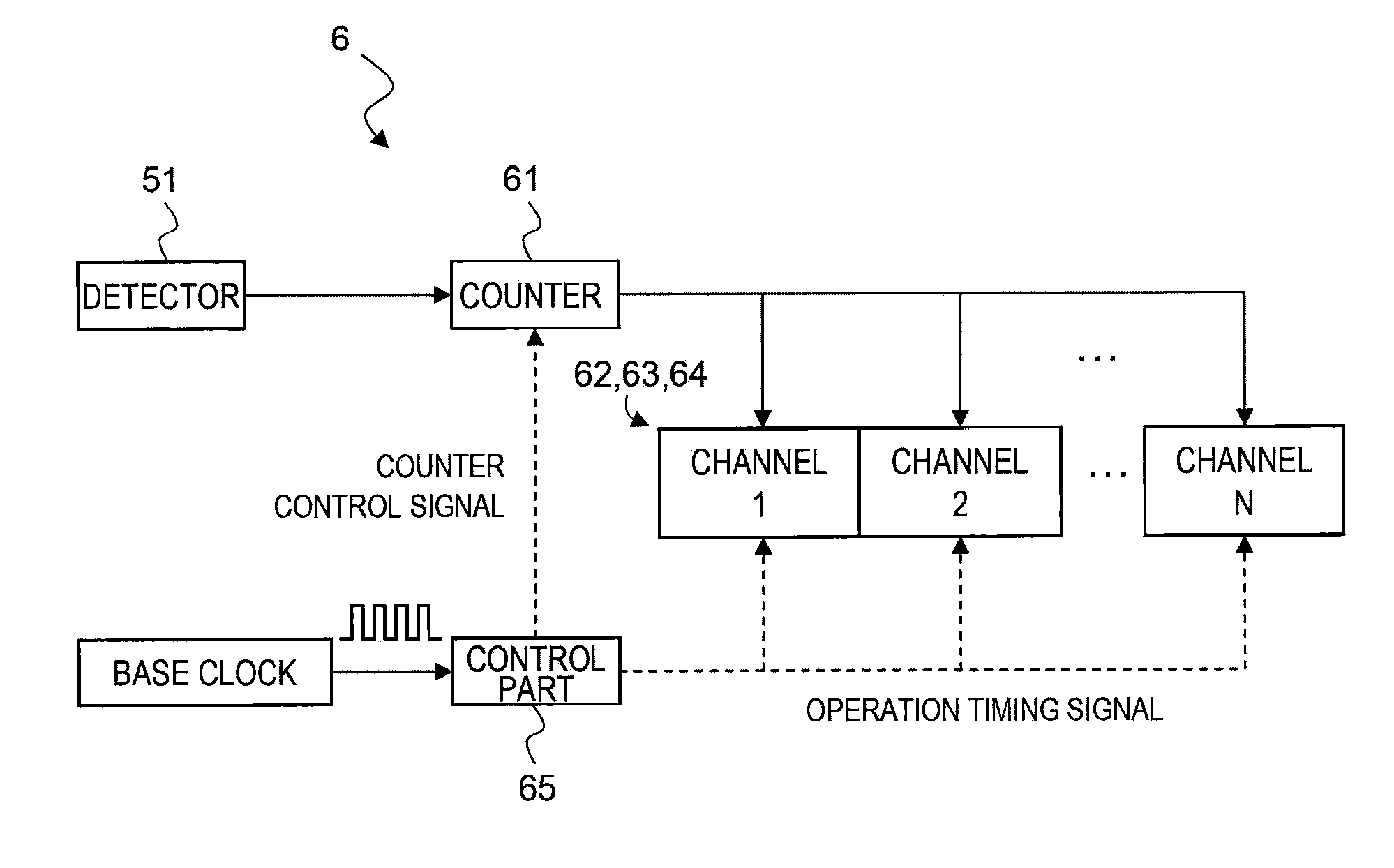Correlator
a correlation spectroscopy and sample method technology, applied in chemical methods analysis, instruments, material analysis, etc., can solve the problems of linear sampling method, reduced accuracy, and difficulty in wide-range particle size use, so as to improve the accuracy of the autocorrelation function
- Summary
- Abstract
- Description
- Claims
- Application Information
AI Technical Summary
Benefits of technology
Problems solved by technology
Method used
Image
Examples
first embodiment
Effect of First Embodiment
[0047]According to the particle size analyzer 1 relating to the present embodiment configured as above, a larger number of data points can be obtained as compared with the conventional exponential sampling method. Also, if the number of channels is fixed, a time close to an optimum delay time can be expressed, and therefore an accuracy of the autocorrelation function and a measurement result can be improved and a circuit can be simplified. Further, the sampling is performed with the delay time having a natural number, and therefore there is no missing or overlap count of the pulse signal. This is the most important issue in the photon correlation method in which information on a diffusion coefficient due to the Brownian movement is obtained from a random signal, and a crucial requirement particularly in the case of a sparse measuring object. Also, effects of being able to simplify the device and increasing the degree of freedom of measurement are produced.
second embodiment
[0048]Next, a second embodiment of the particle size analyzer using the correlator of the present invention is described.
[0049]The particle size analyzer of the present embodiment is different from that of the first embodiment in terms of the delay time in the delay part 63 of the correlator. The control part 65 of the present embodiment is one for setting the delay time Tn in the delay part 63 on a basis of the three-term recurrence formula other than that for the Fibonacci sequence.
[0050]That is, the control part 65 determines the delay time according to a following expression:
[0051]Tn=fn×To,fn=fn-1+fn-3(fn:naturalnumber).Here,fn=fn-1+fn-3=fn-1+(1 / r)fn-2=fn-1+(1 / r2)fn-1=(1+1 / r2)fn-1.
[0052]Accordingly, the sequence formed by the addition of the elements fn−1 and fn−3 of the geometric sequence with a ratio of r, i.e., fn=fn−1+fn−3, can be considered as a geometric sequence with a ratio of r13(=1.4656) if r takes a real root r13(=1.4656) of r2(r−1)−1=0. That is, a seq...
third embodiment
[0054]Next, a third embodiment of the particle size analyzer using the correlator of the present invention is described.
[0055]The particle size analyzer of the present embodiment is different from that of the first embodiment in terms of the delay time in the delay part 63 of the correlator. The control part 65 of the present embodiment is one for setting the delay time Tn in the delay part 63 on a basis of the four-term recurrence formula.
[0056]That is, the control part 65 determines the delay time Tn according to the following expression:
Tn=fn×To,
fn=fn−1+fn−5+fn−6(fn: natural number).
[0057]This sort of recurrence formula can cause a geometric ratio to converge to 1.42, and a geometric ratio of r=√2 to be asymptotically provide. Specifically, the sequence of {1, 1, 1, 1, 1, 1, 3, 5, 7, 9, 11, 15, 23, 35, 51, 71, 97, 135, 193, 279, 401, 569, 801, 1129, . . . } can be obtained. This calculation result may be used as the sampling time without modification, or may be used to determine ...
PUM
| Property | Measurement | Unit |
|---|---|---|
| refractive index | aaaaa | aaaaa |
| opening time | aaaaa | aaaaa |
| particle size | aaaaa | aaaaa |
Abstract
Description
Claims
Application Information
 Login to View More
Login to View More - R&D
- Intellectual Property
- Life Sciences
- Materials
- Tech Scout
- Unparalleled Data Quality
- Higher Quality Content
- 60% Fewer Hallucinations
Browse by: Latest US Patents, China's latest patents, Technical Efficacy Thesaurus, Application Domain, Technology Topic, Popular Technical Reports.
© 2025 PatSnap. All rights reserved.Legal|Privacy policy|Modern Slavery Act Transparency Statement|Sitemap|About US| Contact US: help@patsnap.com



